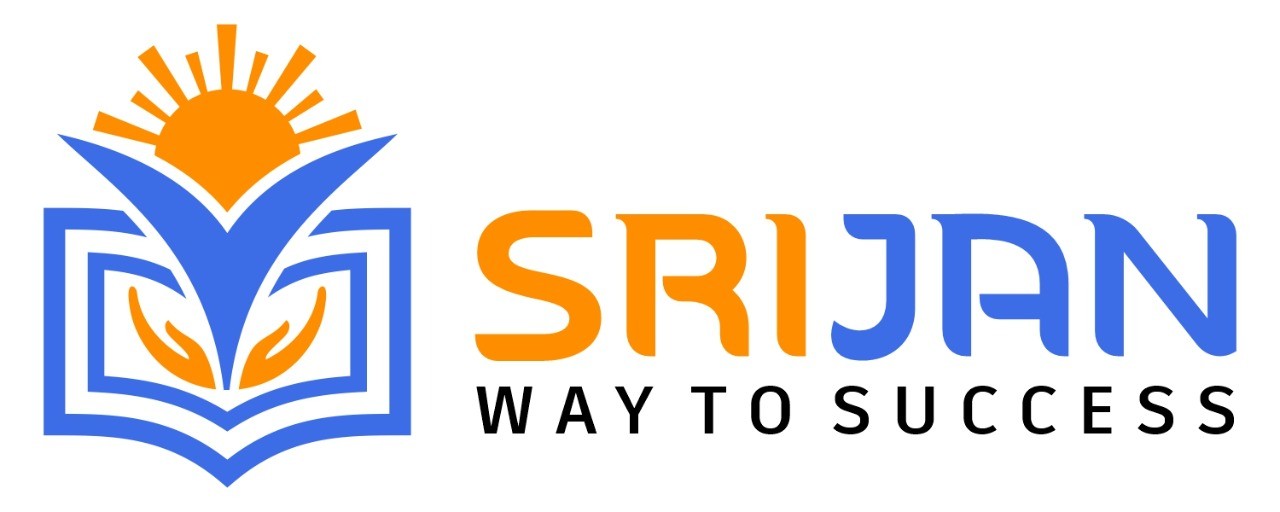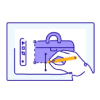SAP TM Online Training: Improve Your Transportation Visibility
SAP TM Training || SAP TM certification Training || SAP TM Online training || SAP TM self-paced training || SAP TM Instructor-Led training
Key Features of Training:
- 40+ Hrs Instructor-led Training
- Mock Interview Session
- Project Work & Exercises
- Flexible Schedule
- 24 x 7 Lifetime Support & Access
- Certification and Job Assistance
Understanding SAP TM (Transportation Management)
SAP TM is a powerful tool within the SAP ecosystem that allows businesses to manage and optimize their transportation processes efficiently. Whether you are handling freight costs, selecting carriers, or ensuring timely deliveries, SAP TM offers a comprehensive solution that enhances supply chain visibility and efficiency.
The fee for SAP TM(Transportation Management) training can vary depending on several factors such as the location, duration of the course, training format, and level of expertise. SAP offers various training options for TM, including instructor-led courses, e-learning courses, and virtual live classrooms.
For More details you can Register
SAP TM(Transportation Management) Certification FAQ's:
1. What is SAP TM certification?
A: SAP TM certification is a professional credential that validates the expertise of individuals in SAP Transportation Management (TM) software. It is awarded by SAP after successful completion of a certification exam.
2. What are the prerequisites for SAP TM certification?
A: There are no prerequisites for SAP TM certification, but it is recommended that candidates have a basic understanding of logistics and transportation processes.
3. What is the format of the SAP TM certification exam?
A: The SAP TM certification exam consists of 80 multiple-choice questions and has a time limit of 180 minutes. It is available in English, German, Spanish, French, Russian, Japanese, and Chinese.
4. How can I prepare for the SAP TM certification exam?
A: SAP offers official certification study materials, including books, e-learning courses, and practice exams. Additionally, there are various online resources and forums available to help candidates prepare for the exam.
5. How much does SAP TM certification cost?
A: The cost of SAP TM certification varies depending on your location and the currency exchange rate. It is recommended to check the SAP website for current pricing.
6. How long is the SAP TM certification valid?
A: SAP TM certification is valid for two years. After this period, individuals must renew their certification by taking a recertification exam or completing specific training courses.
7. What are the benefits of SAP TM certification?
A: SAP TM certification can enhance career opportunities and earning potential for individuals working in the logistics and transportation industry. It also validates the expertise of individuals in SAP TM software and demonstrates a commitment to professional development.
8. How difficult is the SAP TM certification exam?
A: The difficulty level of the SAP TM certification exam varies from person to person. It is recommended to have hands-on experience with SAP TM software and to thoroughly prepare using the official study materials before taking the exam.
9. Can I retake the SAP TM certification exam if I fail?
A: Yes, if you fail the SAP TM certification exam, you can retake it after a certain period of time, usually 24 hours. However, there may be an additional cost for retaking the exam.
10. How long does it take to receive the SAP TM certification after passing the exam?
A: Once you pass the SAP TM certification exam, it can take up to two weeks to receive your certification. You will receive a digital certificate that can be shared online and a printed certificate that can be displayed in your office or home.
SAP TM(Transportation Management) Certification:
SAP TM (Transportation Management) Certification is a professional credential that validates the knowledge and skills of individuals in SAP TM software. It is awarded by SAP after successfully passing a certification exam. The certification exam tests the candidate's understanding of SAP TM processes, including transportation planning and execution, carrier selection, freight cost management, and supply chain visibility.
There are no formal prerequisites for SAP TM certification, but it is recommended that candidates have a basic understanding of logistics and transportation processes. Additionally, it is recommended to have hands-on experience with SAP TM software and to thoroughly prepare for the certification exam using the official SAP certification study materials.
The SAP TM certification exam consists of 80 multiple-choice questions and has a time limit of 180 minutes. The exam is available in several languages, including English, German, Spanish, French, Russian, Japanese, and Chinese.
SAP TM(Transportation Management) Curriculum:
1. Introduction to SAP TM
Overview of the solution and its benefits
Navigation and user interface
Basic system settings and configuration
2. Master Data Management
Configuration of transportation zones, locations, and partners
Management of carrier contracts and agreements
Creation and maintenance of transportation networks
3. Order Management
Creation and management of transportation orders
Handling of delivery and pickup requests
Management of freight units and tracking of shipments
4. Planning and Optimization
Optimization of routes and carriers based on cost, time, and service levels
Planning of multi-leg and multi-mode transportation
Capacity planning and load optimization
5. Collaboration and Visibility
Collaboration with carriers and logistics service providers
Integration with other SAP modules such as SAP ERP, SAP EWM, and SAP GTS
Tracking and monitoring of shipments and events
6. Analytics and Reporting
Use of SAP TM analytics to monitor KPIs and performance
Creation of custom reports and dashboards
Integration with SAP BusinessObjects for advanced analytics and reporting
7. Advanced Topics
Configuration of complex transportation scenarios such as cross-border and hazardous materials
Management of freight settlement and invoicing
Integration with external transportation management systems
8. Introduction to SAP TM:
Overview of the solution and its benefits
Navigation and user interface
Basic system settings and configuration
9. Master Data Management:
Configuration of transportation zones, locations, and partners
Management of carrier contracts and agreements
Creation and maintenance of transportation networks
10. Order Management:
Creation and management of transportation orders
Handling of delivery and pickup requests
Management of freight units and tracking of shipments
11. Planning and Optimization:
Optimization of routes and carriers based on cost, time, and service levels
Planning of multi-leg and multi-mode transportation
Capacity planning and load optimization
12. Collaboration and Visibility:
Collaboration with carriers and logistics service providers
Integration with other SAP modules such as SAP ERP, SAP EWM, and SAP GTS
Tracking and monitoring of shipments and events
13. Analytics and Reporting:
Use of SAP TM analytics to monitor KPIs and performance
Creation of custom reports and dashboards
SAP TM(Transportation Management) Interview Questions & Answers:
1. What is SAP TM?
A: SAP Transportation Management (SAP TM) is a software platform developed by SAP for managing transportation and logistics processes in a business.
2. What are the key features of SAP TM?
A: Some key features of SAP TM include:
Transportation planning and optimization
Carrier selection and contract management
Shipment execution and monitoring
Freight cost management
Visibility and event management
Analytics and reporting
3. What are the benefits of using SAP TM?
A: Some benefits of using SAP TM include:
Improved visibility and control over transportation and logistics processes
Increased efficiency and productivity
Reduced transportation costs
Enhanced customer service through improved on-time delivery performance
Improved compliance with regulations and standards
4. What is the transportation planning and optimization module in SAP TM?
A: The transportation planning and optimization module in SAP TM enables businesses to create optimal transportation plans by considering various factors such as shipment size, mode of transport, carrier capacity, and delivery deadlines. It helps businesses to identify the most cost-effective and efficient transportation options while ensuring timely delivery.
5. What is the role of carrier selection and contract management in SAP TM?
A: The carrier selection and contract management module in SAP TM allows businesses to manage carrier contracts, rates, and services. It enables businesses to select the most suitable carriers based on their capabilities and pricing, negotiate contracts, and manage carrier performance.
6. What is shipment execution and monitoring in SAP TM?
A: The shipment execution and monitoring module in SAP TM allows businesses to manage the execution of transportation plans, track the status of shipments in real-time, and receive alerts for any deviations or delays. It also enables businesses to communicate with carriers and other stakeholders involved in the transportation process.
7. What is freight cost management in SAP TM?
A: The freight cost management module in SAP TM enables businesses to manage freight costs by automating the calculation of freight charges based on carrier contracts and actual shipment data. It helps businesses to identify cost-saving opportunities and optimize their transportation spend.
8. What is visibility and event management in SAP TM?
A: The visibility and event management module in SAP TM provides real-time visibility into transportation and logistics processes, enabling businesses to track shipments, monitor carrier performance, and receive alerts for any exceptions or delays. It also enables businesses to collaborate with carriers and other stakeholders to resolve issues and improve performance.
9. What is analytics and reporting in SAP TM?
A: The analytics and reporting module in SAP TM provides businesses with comprehensive analytics and reporting capabilities, enabling them to analyze transportation and logistics data, identify trends and patterns, and make data-driven decisions. It also enables businesses to generate reports for various stakeholders and compliance requirements.
10. What are the different deployment options for SAP TM?
A: SAP TM can be deployed on-premises or in the cloud. On-premises deployment involves installing the software on servers owned and managed by the business. Cloud deployment involves hosting the software on a cloud infrastructure managed by a third-party provider.
11. What is the integration capability of SAP TM with other SAP solutions?
A: SAP TM is designed to integrate seamlessly with other SAP solutions such as SAP ERP, SAP S/4HANA, and SAP EWM. Integration with these solutions enables businesses to streamline transportation and logistics processes and achieve end-to-end visibility across the supply chain.
12. What is the role of SAP TM in the freight forwarding industry?
A: SAP TM plays a crucial role in the freight forwarding industry by enabling freight forwarders to manage transportation and logistics processes, collaborate with customers and carriers, and provide value-added services such as customs clearance and warehousing.
13. What are the key challenges in implementing SAP TM?
A: Some key challenges in implementing SAP TM include:
Integration with other SAP solutions and third-party systems
Data quality and completeness
Customization and configuration to meet business-specific requirements
User adoption and change management
Managing the complexity of transportation networks and regulations
14. What are some best practices for implementing SAP TM?
A: Some best practices for implementing SAP TM include:
Defining clear goals and objectives for the implementation
Conducting a thorough analysis of existing transportation and logistics processes
Engaging stakeholders and subject matter experts throughout the implementation process
Prioritizing data quality and completeness
Following industry-standard implementation methodologies and best practices
Providing adequate training and support for users
Continuously monitoring and measuring the success of the implementation
15. What is the difference between SAP TM and SAP EWM?
A: SAP TM is focused on managing transportation and logistics processes, while SAP EWM is focused on managing warehouse operations. However, the two solutions can be integrated to provide end-to-end visibility and control over the supply chain.
16. What is the role of SAP TM in supply chain management?
A: SAP TM plays a crucial role in supply chain management by enabling businesses to manage transportation and logistics processes, optimize their transportation spend, and achieve end-to-end visibility across the supply chain. This helps businesses to improve efficiency, reduce costs, and enhance customer service.
17. What is the transportation network in SAP TM?
A: The transportation network in SAP TM represents the relationships between different locations, carriers, and transportation modes involved in the transportation process. It enables businesses to create optimal transportation plans by considering various factors such as shipment size, mode of transport, carrier capacity, and delivery deadlines.
18. What is the role of SAP TM in managing carrier performance?
A: SAP TM enables businesses to manage carrier performance by tracking carrier performance metrics such as on-time delivery, transit time, and freight cost. It also enables businesses to collaborate with carriers to resolve issues and improve performance.
19. What is the role of analytics in SAP TM?
A: Analytics plays a crucial role in SAP TM by providing businesses with insights into transportation and logistics data, enabling them to identify trends, patterns, and opportunities for improvement. Analytics also enables businesses to generate reports for various stakeholders and compliance requirements.
20. What is the SAP TM cockpit?
A: The SAP TM cockpit is a graphical user interface that provides users with a consolidated view of transportation and logistics processes. It enables users to monitor shipments, track carrier performance, and manage exceptions and delays.
Participants will have 24/7 access to our online lab, providing hands-on experience with SAP TM tools and scenarios.
This includes server access to S/4 HANA 2023 for 1 year, ensuring you have ample time to practice and apply your skills in a real-world environment.
With this extended access, you can work on projects, explore advanced features, and solidify your understanding of SAP TM in the latest SAP S/4 HANA version.
















